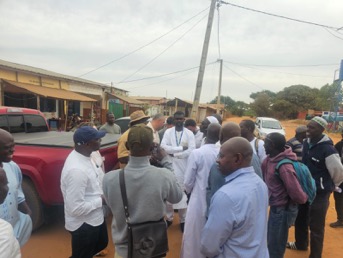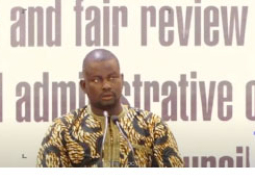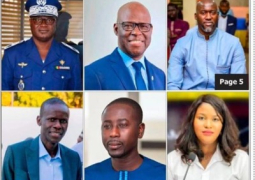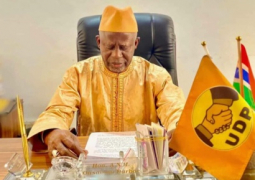
The letter dated 30 January 2025, has been addressed to the Managing Director of GPA and copied to the permanent secretary, Ministry of Works and Infrastructure, National Assembly Select Committee on Monitoring and Implementation of Government Projects, chairman Brikama Area Council, Governor, West Coast Region, National Assembly Member, Kombo South and Chief of Kombo South.
In the letter, Barrister Lamin J.. Darbo has demanded the preservation of the cummunity's cultural and historical sites, environmentally sensitive areas and eco-tourism areas and facilities, pointing out that they should not be impacted by the DSP project. Such sites, he said include but not limited to Hawaba, Berewuleng Prayer Shrine, Fish Landing Site, Mangrove Rejuvenation and Planting Area and the Sacred Beikefet River.
In the letter, key community representatives including the alkalo ((village head), council of elders, and the Sanyang Village Development Fund” outlined their apprehensions, particularly about the potential environmental and social impact of the project.
Lawyer Dabo acknowledged that the development of a deep seaport in Sanyang presents an opportunity for significant economic growth. He thus emphasised that the project could have profound communal and individual consequences if managed with a well-structured governance framework.
“My clients welcome the location of a Deep Sea Port (DSP) in Sanyang as an opportunity with the potential to uplift its economic status in major ways assuming the presence of a considerate governance structure. The potentiality of an economic facelift for the community notwithstanding, my clients are nevertheless apprehensive that it may be deeply affected communally and individually by the DSP,” he said.
One of the primary concerns raised is the lack of transparency regarding the exact location of the project, according to Lawyer Dabo, noting that while the GPA has been informing residents that their properties may be affected, many remain unaware of the specific site and dimensions of the deep seaport.
“Even as the Gambia Ports Authority (GPA), and its oversight Ministry of Transport Works and Infrastructure are sentising residents through flyers that their properties are affected, they are, without exception in darkness as to the location and true dimensions of the DSP overall.”
Dabo further stressed the importance of adhering to legal procedures when acquiring private land for public use.
“In a climate such as is triggered by the DSP, fidelity to the process delineated by no less than the supreme law of the land is quite essential.”
“My clients accept the principle that the government of The Gambia and its constituent departments and agencies can acquire landed property from private owners for public use but must follow a stipulated legal process mandated by the overriding law of the land,” he said.
“More fundamentally, my clients take the view that the GPA and the government appear to have already identified and chosen a location without considering alternative sites and without consulting the community of Sanyang to minimize the impact on Sanyang,”
“All land facilities of the DSP be located on the sparsely settled Tourism Development Area after the old Hawba settlement to the boundary between Sanyang and Tujereng on the coastline,” he wrote.
He emphasised that private properties located outside the designated 800-meter Tourism Development Area (TDA) from the high-water mark should remain unaffected.
“All private land settlements, properties, and or compounds located outside the designated TDA area of 800 meters from the watermark should strictly not be affected by the DSP as there is more than enough space in the sparely settled TDA after the old Hawa settlements to the boundary between Sanyang and Tujering.”





